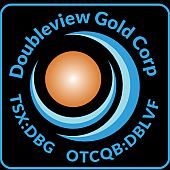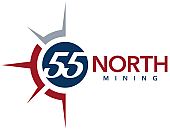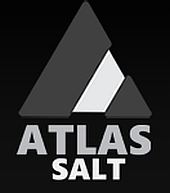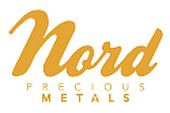 Romios hires Simcoe to conduct IP survey at Trek South
Romios hires Simcoe to conduct IP survey at Trek South
2022-07-07 14:41 ET – News Release
Mr. Stephen Burega reports
ROMIOS ENGAGES SIMCOE GEOSCIENCE TO UNDERTAKE AN ALPHA IP SURVEY ACROSS THE TREK SOUTH PORPHYRY-STYLE CU-AU-AG SYSTEM IN THE GOLDEN TRIANGLE, B.C.
Romios Gold Resources Inc. has contracted Simcoe Geoscience of Stouffville, Ont., to undertake a next-generation Alpha IPTM induced polarization geophysical survey across the one-kilometre-wide Trek South porphyry Cu-Au-Ag (copper-gold-silver) target in the Golden Triangle of northwestern British Columbia.
As reported in November, 2021 (see news release, Nov. 18), Romios’s fieldwork in the Trek South area over the past two to three years has discovered and partially delineated a greater than one km wide zone of porphyry-style alteration and veinlet-hosted copper-gold-silver (Cu-Au-Ag) mineralization. Simcoe’s advanced IP technology is expected to detect key sulphide mineralization present below surface to depths of 550 to 650 m for drill targeting.
The IP survey is scheduled to begin in early July and will take approximately seven days to complete, weather permitting.
Highlights:
- Romios’s recent geological mapping and sampling programs have identified a greater than one km wide zone of porphyry-style epidote alteration with a coincident greater than 800 m wide zone of quartz-pyrite plus/minus chalcopyrite veinlets only recently exposed by the receding of a local glacier and snowfield.
- These one-to-10-centimetre-wide veinlets are often closely spaced enough to form stockworks and have assayed from trace up to 1.83 per cent Cu (copper), 2.3 g/t (grams per tonne) Au (gold) and 257 g/t Ag (silver) with locally significant tellurium and bismuth values.
- The presence of the broad epidote (propylitic) alteration zone and the mineralized pyrite stockwork suggests that these exposures are adjacent to or overlying a porphyry Cu-Au-Ag system.
- The Alpha IPTM survey will be conducted initially on three lines up to two km long across the centre of the alteration system. Additional lines may be surveyed based on the in-field results of these first lines.
- The length of the Alpha IP survey lines is strategically designed to enable detection of any sulphide mineralization up to 550 to 650 m below surface and beneath the pyrite stockwork cap.
- If time permits the survey may be expanded to include the first ever line(s) of IP across the core of the JW porphyry prospect located six km northwest of the Galore Creek deposits. The margins of this one km wide pluton have known porphyry style mineralization and alteration but the core of the system has never been tested by geophysics or drilling.
“The upcoming IP survey over the Trek South porphyry target is a very important milestone for this project and could be a game-changer for Romios if it is successful in detecting sulphide mineralization at depth beneath the surface exposures,” stated Stephen Burega, president. He continued: “We are also very keen to complete the first-ever IP survey over the core of the JW porphyry prospect if time permits. This site has both historic drill intersections of porphyry type mineralization and exposures of mineralization and intense alteration along the margin of the pluton, but the high-potential centre of the pluton has never been tested. To have another such promising porphyry prospect so close to Galore Creek is an incredible asset for Romios.”
Background on the Trek South target
Romios’s Trek South claim block covers about 18 square km of highly prospective ground known to contain at least eight historic and underexplored Cu-Au-Ag showings in addition to the recently discovered porphyry-style alteration and mineralization. It is just three km from Romios’s Trek North zone, one of the few known and partially drill-defined porphyry Cu-Au-Ag zones in the area not held by the Teck-Newmont Galore Creek joint venture. Both the Trek North and Trek South sites are within 1.4 km of the partly cleared road route to Teck and Newmont’s enormous Galore Creek Cu-Au porphyry deposit(s) and just 13 km from the proposed Galore Creek mill site.
Following Romios’s 2019 discovery of garnet-epidote-pyrite skarn veins on the Trek South claims, a hyperspectral survey of part of the target area in 2020 by HEG & Associates confirmed the presence of porphyry-type alteration minerals in two broad areas. Skarn zones are commonly developed on the margins of many porphyry copper systems and are especially prominent in many of the Golden Triangle deposits.
In 2021, Romios personnel undertook detailed mapping and sampling across part of the Trek South claims that until recently had been covered by relatively thin glacial ice and snowfields, resulting in the discovery of the porphyry-type mineralized and altered zone. In addition, the 2021 survey partially defined previously unknown intrusions which may be related to the mineralizing event, as well as numerous boulder trains of massive epidote alteration, plus/minus local copper mineralization, apparently derived from an area still hidden beneath the glacier. Extensive areas of strong epidote alteration occur along ridges surrounded by snow and ice immediately south of the Trek South exposures and Cu-Au-Ag mineralized boulders have been found on the small glacier originating in this area. These areas remain to be mapped and sampled in 2022.
QA/QC (quality assurance/quality control): The samples discussed in this document were grab and chip samples considered representative of the veins and boulders being sampled. They were submitted to the ISO/IEC 17025 accredited ALS Canada Ltd. laboratories in Terrace and Vancouver, B.C., for assay and multielement analyses. As a matter of procedure, a rigorous quality assurance and quality control program was implemented to ensure reliable assay results by inserting alternating blanks and commercial assay standards at every 10th position in the sample series.
Qualified person
The technical information in this news release has been reviewed and approved by John Biczok, PGeo, vice-president of exploration for Romios Gold, and a qualified person as defined by National Instrument 43-101. In addition to his extensive experience with several major mining companies exploring for a wide variety of ore deposit types across Canada and India, Mr. Biczok spent 12 years conducting exploration and research at the Musselwhite gold mine in Northwestern Ontario.
About Romios Gold Resources Inc.
Romios Gold Resources is a progressive Canadian mineral exploration company engaged in precious- and base-metal exploration, focused primarily on gold, copper and silver. It has a 100-per-cent interest in the Lundmark-Akow Lake Au-Cu property plus four additional claim blocks in Northwestern Ontario and extensive claim holdings covering several significant porphyry copper-gold prospects in the Golden Triangle of British Columbia. Additional interests include the Kinkaid Nevada claims covering numerous Au-Ag-Cu (gold-silver-copper) workings and two former producers: the La Corne molybdenum mine property (Quebec) and the Scossa mine property (Nevada), which is a former high-grade gold producer. The company retains a continuing interest in several properties including a 20-per-cent carried interest in five of Honey Badger Mining’s claim blocks in the Thunder Bay silver district of Northwestern Ontario; a 2-per-cent NSR (net smelter return) on McEwen Mining’s Hislop gold property in Ontario; a 2-per-cent NSR on Enduro Metals Corp.’s Newmont Lake Au-Cu-Ag property in British Columbia, and the company has signed a definitive agreement with Copperhead Resources Inc., whereby Copperhead can acquire a 75-per-cent ownership interest in Romios’s Red Line project in British Columbia.
We seek Safe Harbor.































